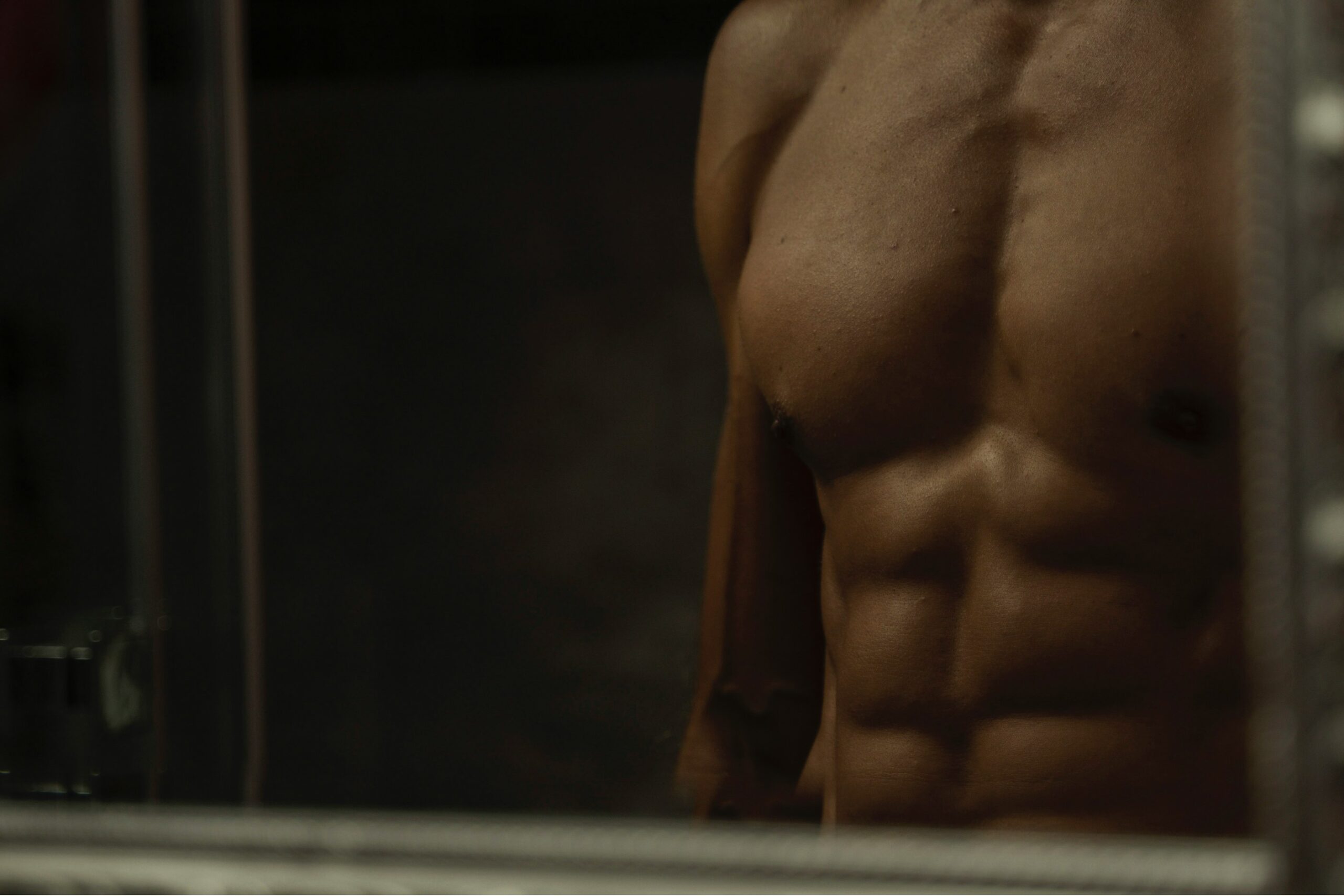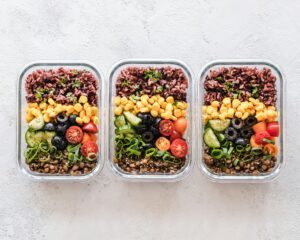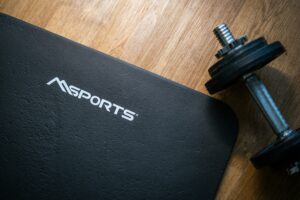There are so many fitness programs and complicated routines around today. The path to a toned, strong body can seem overwhelming. The truth is, you don’t need dozens of exercises or fancy machines to achieve remarkable results. These five fundamental movements, when performed consistently and with proper form, will transform your physique and build the lean, toned body you’ve been working toward.
Why These 5 Exercises Work
The magic lies in compound movements exercises that work multiple muscle groups simultaneously. Unlike isolation exercises that target single muscles, compound movements maximise your workout efficiency by engaging your entire body. This approach burns more calories, builds functional strength, and creates the lean muscle definition that gives you that coveted “toned” appearance.
These exercises also trigger what fitness professionals call the “afterburn effect” or EPOC (Excess Post-Exercise Oxygen Consumption). Your body continues burning calories at an elevated rate for hours after your workout, accelerating fat loss and revealing the muscle definition underneath.
The beauty of this approach is its simplicity and effectiveness. You can perform these exercises anywhere – at home, in a gym, or even outdoors. They require minimal equipment, making consistency easier to maintain regardless of your schedule or circumstances.
Exercise 1: The Squat – Your Lower Body Foundation
The squat is often called the king of exercises, and for good reason. This single movement targets your quadriceps, hamstrings, glutes, calves, and core while improving mobility and functional strength for everyday activities.
To perform a perfect squat, stand with your feet slightly wider than shoulder-width apart, toes pointing slightly outward. Keep your chest up and shoulders back as you lower your body as if sitting into an invisible chair. Your weight should be distributed evenly across your feet, with your knees tracking over your toes.
Descend until your thighs are parallel to the ground or as low as your mobility allows. Drive through your heels to return to the starting position, squeezing your glutes at the top. Focus on keeping your core engaged throughout the movement to protect your lower back and maximize stability.
Start with bodyweight squats, aiming for 3 sets of 12-15 repetitions. As you build strength, you can add resistance with dumbbells, a barbell, or even a backpack filled with books. The key is progressive overload – gradually increasing the challenge to continue seeing results.
Common mistakes include allowing your knees to cave inward, leaning too far forward, or not descending deep enough. Take time to master the movement pattern with bodyweight before adding external resistance.
Exercise 2: The Push-Up – Upper Body Power
Push-ups are the ultimate upper body exercise, working your chest, shoulders, triceps, and core while requiring no equipment whatsoever. This exercise builds both strength and muscular endurance while improving shoulder stability and posture.
Begin in a plank position with your hands placed slightly wider than shoulder-width apart, fingers spread for stability. Your body should form a straight line from your head to your heels, with your core engaged to prevent sagging or piking.
Lower your body until your chest nearly touches the ground, keeping your elbows at a 45-degree angle from your torso. Push through your palms to return to the starting position, maintaining that straight body line throughout the movement.
If traditional push-ups are too challenging initially, modify by performing them on your knees or against an elevated surface like a bench or wall. As you build strength, progress to standard push-ups and eventually to more challenging variations like diamond push-ups or decline push-ups.
Aim for 3 sets of 8-12 repetitions, focusing on controlled movement and proper form over speed. Quality repetitions will yield better results than sloppy, rushed movements.
Exercise 3: The Deadlift – Posterior Chain Powerhouse
The deadlift is unmatched for building strength in your posterior chain – the muscles along the back of your body including your hamstrings, glutes, and back muscles. This exercise also engages your core, forearms, and traps, making it one of the most comprehensive movements you can perform.
Start with your feet hip-width apart, standing behind a barbell, dumbbells, or any weighted object. Keep your chest up and shoulders back as you hinge at your hips, pushing your butt back and allowing your knees to bend slightly. Your back should maintain its natural curve throughout the movement.
Grab the weight with both hands, then drive through your heels and push your hips forward to stand up tall. The weight should stay close to your body throughout the movement. Reverse the motion by pushing your hips back first, then lowering the weight with control.
If you’re new to deadlifts, start with a light weight or even just practice the hip hinge movement without any weight. Focus on feeling the stretch in your hamstrings as you lower and the powerful contraction in your glutes as you stand up.
Begin with 3 sets of 8-10 repetitions, emphasizing perfect form over heavy weight. The deadlift has incredible potential for building strength and muscle, but it requires respect and proper technique to perform safely.
Exercise 4: The Plank – Core Stability Champion
A strong core is essential for overall body strength, posture, and injury prevention. The plank is the most effective exercise for building core stability while also engaging your shoulders, back, and glutes. Unlike crunches, which only work your abs in one plane of motion, the plank builds functional core strength that transfers to all other activities.
Start in a push-up position, then lower down to rest on your forearms instead of your hands. Your elbows should be directly under your shoulders, and your body should form a straight line from head to heels. Engage your core by gently pulling your belly button toward your spine.
Focus on breathing normally while maintaining perfect alignment. Avoid letting your hips sag or pike up, and resist the urge to hold your breath. The plank is about quality time under tension, not just duration.
Begin with 3 sets, holding for 20-30 seconds each. As your core strength improves, gradually increase the hold time. Advanced practitioners can hold a plank for several minutes, but most people will see excellent results with holds of 60-90 seconds.
Side planks are an excellent variation that targets the often-neglected lateral core muscles. Alternate between regular and side planks to ensure balanced core development.
Exercise 5: The Row – Balancing Your Posture
In our modern world of desk jobs and forward-hunched postures, rowing movements are crucial for maintaining shoulder health and creating a balanced physique. Rows target your rhomboids, middle traps, rear deltoids, and latissimus dorsi while also engaging your biceps and core.
You can perform rows with dumbbells, resistance bands, a barbell, or even a towel and a sturdy anchor point. For a bent-over dumbbell row, hold a weight in each hand and hinge at your hips, keeping your back straight and core engaged.
Pull the weights toward your ribs, squeezing your shoulder blades together at the top of the movement. Focus on initiating the pull with your back muscles rather than your arms. Lower the weights with control, feeling a stretch in your lats and rhomboids.
If you don’t have weights, resistance bands work excellently for rowing movements. You can also perform inverted rows using a sturdy table – lie underneath and pull your chest toward the table edge.
Aim for 3 sets of 10-12 repetitions, focusing on the squeeze at the top of each rep. This exercise is crucial for counteracting the forward shoulder posture that comes from too much sitting and computer work.
Creating Your Workout Program
These five exercises form the foundation of an incredibly effective workout program. You can organize them in several ways depending on your schedule and preferences. For beginners, performing all five exercises in one session, three times per week, provides excellent results with adequate recovery time.
A sample beginner routine might include 3 sets of each exercise: 12-15 squats, 8-12 push-ups, 8-10 deadlifts, 20-30 second planks, and 10-12 rows. Rest 60-90 seconds between sets and exercises, focusing on maintaining good form throughout.
As you advance, you can increase the challenge by adding weight, increasing repetitions, or performing more challenging variations. You might also split the exercises into upper body and lower body days, allowing for more volume and intensity.
The key is consistency and progressive overload. Track your workouts, noting the weights used, repetitions completed, and how you felt. Gradually increase the challenge week by week to continue seeing improvements.
Maximising Your Results
While these five exercises are incredibly powerful, several factors will determine your success. Consistency trumps intensity – it’s better to perform these exercises regularly with moderate effort than to occasionally push yourself to exhaustion.
Proper form is non-negotiable. Poor form not only increases injury risk but also reduces the effectiveness of each exercise. If you’re unsure about your technique, consider working with a qualified trainer for a few sessions or filming yourself to review your form.
Nutrition plays a crucial role in revealing the toned physique these exercises will build. You can’t out-exercise a poor diet, so focus on eating whole foods, adequate protein, and maintaining a slight caloric deficit if fat loss is your goal.
Recovery is when your body actually builds muscle and adapts to the training stimulus. Ensure you’re getting adequate sleep, managing stress, and allowing at least one day of rest between intense sessions.
Progression and Variations
As you master these basic movements, numerous progressions will keep you challenged for years to come. Squats can evolve into jump squats, pistol squats, or Bulgarian split squats. Push-ups can progress to handstand push-ups, archer push-ups, or plyometric variations.
Deadlifts can be performed with different stances, tempos, or implements. Single-leg deadlifts add a balance challenge while targeting stability. Planks can progress to plank-ups, mountain climbers, or single-limb variations that challenge your stability further.
Rows can be performed at different angles, with different grips, or single-arm variations that add an anti-rotation challenge to your core. The possibilities are endless, ensuring you’ll never outgrow these fundamental movements.
Common Mistakes to Avoid
The biggest mistake people make is trying to do too much too soon. Start conservatively with these exercises, focusing on mastering the movement patterns before adding intensity or complexity. Your body needs time to adapt to new movement demands.
Avoid the temptation to add more exercises just because you feel like you should be doing more. These five movements provide everything you need for a complete physique transformation. Adding unnecessary complexity often leads to decreased focus and results.
Don’t neglect the warm-up and cool-down. Spend 5-10 minutes preparing your body for exercise with dynamic movements and light cardio. Follow your workout with static stretching to maintain mobility and aid recovery.
Your Transformation Journey
Building a toned body with these five exercises is not about quick fixes or dramatic transformations. It’s about developing sustainable habits that you can maintain for life. The strength, confidence, and energy you’ll gain from consistent practice of these movements will impact every area of your life.
Start where you are, use what you have, and do what you can. These exercises will meet you where you are and grow with you as you become stronger.
Remember that everyone’s journey is different. Focus on your own progress rather than comparing yourself to others. Celebrate the small victories, the extra repetition, the improved form, the day you didn’t skip your workout when you didn’t feel like it.
The path to a toned body begins with a single workout. Choose a day this week to start, commit to consistency, and trust the process. These five exercises have transformed countless bodies and lives. With dedication and patience, they’ll transform yours too.



